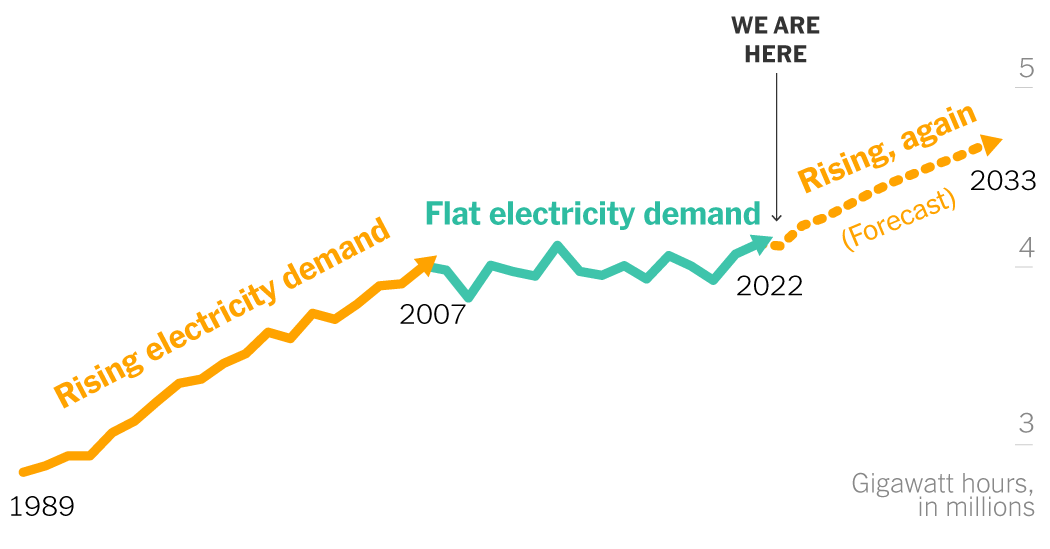The Yemen Crisis
Featured article
Article content
Since the COVID-19 pandemic, The United States has witnessed a large transformation in the power markets. Overcoming a period of flat electricity demand since 2010, a new paradigm is shaping the electricity market, with exponential forecasts reversing this downward trend. Driven mainly by the rapid expansion of data centers and artificial intelligence, sustainable practices are needed to balance this expanding energy desire.

Tech giants like Google and Microsoft have pioneered this digital revolution. In 2023, both companies consumed roughly 24 terawatt-hours (TWh) of electricity, which experts estimate is more than the energy usage of over 100 countries. This figure is already a 17% increase from 2022 and is projected to continue to grow in the near future. Today, data currently accounts for about 1% of global electricity consumption. With the rise of artificial intelligence, this figure is projected to increase in the coming years.
These large tech companies are exploring innovative solutions to address these demand changes. Amazon, Google, and Microsoft have slowly invested in nuclear energy as a way to power their data centers. A senior advisor from a leading New York City based advisory boutique said, not all forms of nuclear energy are necessarily clean, but the form that these tech giants are aiming to provide will likely be a clean and reliable form of energy.
However, the policy environment is constantly changing, and there will always be fluctuations in anticipated growth or reduction in all markets. Harry Picone, Chief of Staff at esVolta, believes that establishing the right policies to support the development of new power generation is critical to support investments in the industry. Recent announcements related to preventing development of offshore and onshore wind farming on federal land is one example of the many hurdles developers could be facing, impacting years of planning and project developments. With concerns over reliability and environmental impacts, President Tump pledges to limit projects upon taking office, favoring other forms of renewable resources and traditional fossil fuels. In the words of the senior advisor, “everything has tradeoffs.” Such new policies could still support meeting the energy demand through different forms of power generation, and challenging the transition into sustainable energy alternatives. Supportive and stable policies providing investors regulatory certainty in project development, which involves years of planning and material capital investments, remain one of the key challenges in the industry.
Moving forward, The United States requires an innovative approach between policymakers and industry leaders to face the growing energy demand. Investments in renewable energy infrastructure and sustainability are imperative, which is reinforced through Picone’s belief that data center consumption will be an incredibly big part of energy demand by 2040. The Department of Energy estimates that data centers could reach up to 12% of total U.S. electricity by 2028, which demonstrates the urgent call for developing sustainable energy projects that support the energy transition. If there remains an unbalanced power market, with high demand and insufficient supply, this could create significant price volatility. Ultimately, this volatility encourages a sustainable energy future, as these price changes could impact the U.S. competitive landscape.